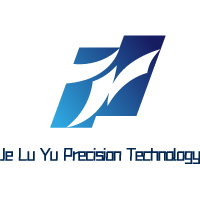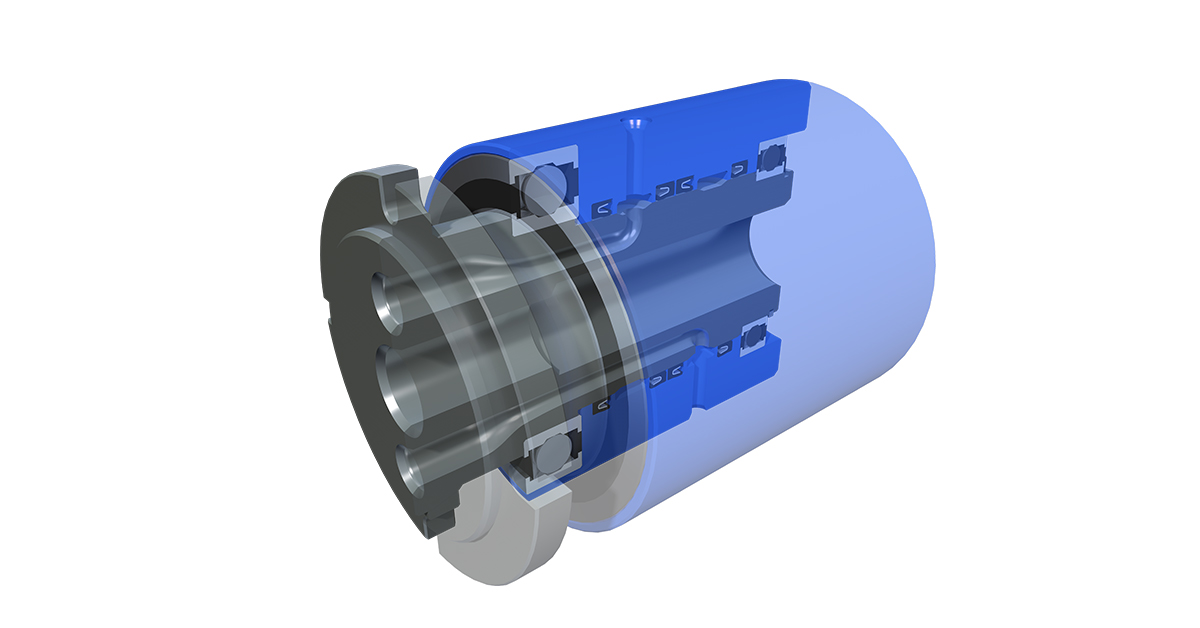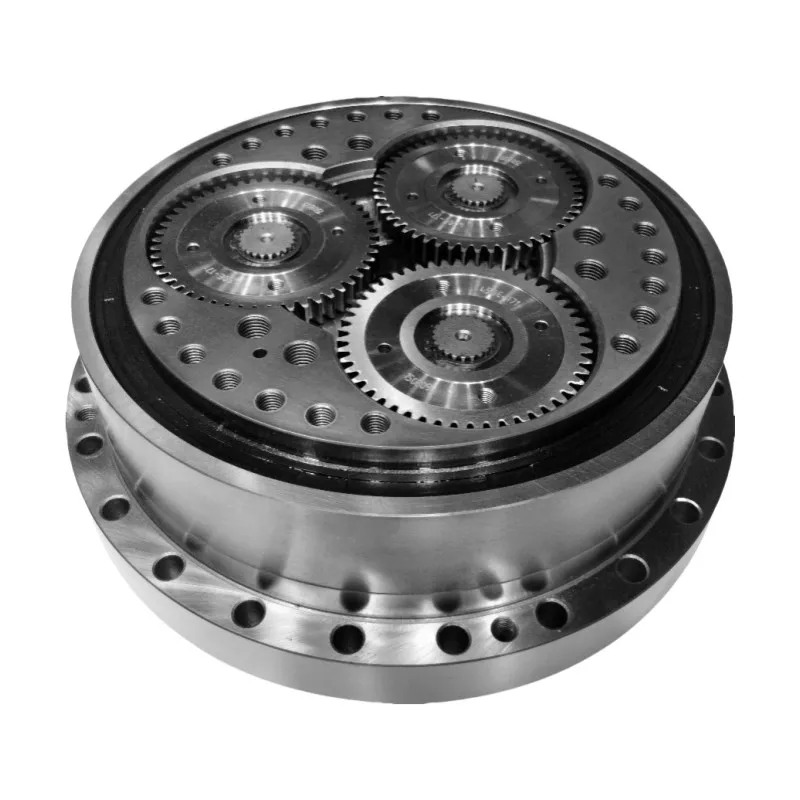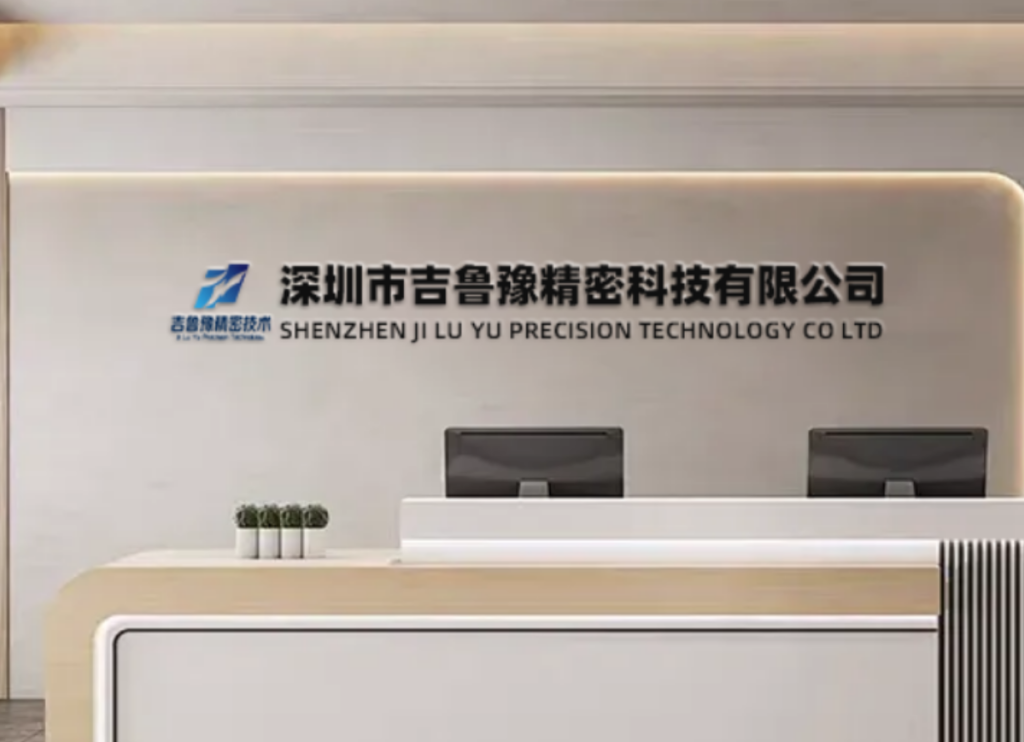7 Critical Manufacturing Processes for High-Performance Robotic Joint Actuator Systems
Introduction: Precision Engineering in Robotic Motion Systems
The evolution of industrial automation has reached unprecedented levels of sophistication, with robotic joint actuator technology standing at the forefront of this transformation. These complex electromechanical systems represent the convergence of advanced materials science, precision manufacturing, and intelligent control systems. The robotic joint actuator serves as the fundamental motion source in modern robotic systems, directly influencing performance metrics including positioning accuracy, torque density, operational smoothness, and system reliability. As robotics continue to advance into more demanding applications, the manufacturing quality of each robotic joint actuator becomes increasingly critical to overall system success.
At JLYPT, our expertise in precision CNC machining has positioned us as leaders in manufacturing high-performance robotic joint actuator components. This comprehensive technical analysis examines seven essential manufacturing processes that transform engineering designs into reliable motion systems, while exploring the sophisticated engineering principles that ensure optimal performance across diverse industrial applications.
1. Advanced Material Selection and Processing
1.1 Strategic Material Engineering
The foundation of any high-performance robotic joint actuator begins with meticulous material selection, where each component’s mechanical, thermal, and tribological properties are carefully matched to its specific function within the system.
Comprehensive Material Selection Matrix:
| Material Grade | Component Application | Tensile Strength (MPa) | Thermal Conductivity (W/m·K) | Hardness (HRC) | Special Properties |
|---|---|---|---|---|---|
| Aluminum 7075-T6 | Actuator Housing, Structural Frames | 572 | 130 | 60 | High strength-to-weight ratio |
| Stainless 17-4PH | Shafts, Fasteners | 1,310 | 18 | 44 | Corrosion resistance, high strength |
| Alloy Steel 4340 | Gearing Components | 1,720 | 42 | 58 | Exceptional impact resistance |
| Titanium 6Al-4V | Aerospace Actuators | 950 | 6.7 | 36 | Superior fatigue strength |
| Bronze C93200 | Bearing Surfaces, Bushings | 310 | 58 | 75 | Excellent wear resistance |
| Engineering Plastics | Seals, Insulators | 80-150 | 0.2-0.5 | R120 | Self-lubricating, chemical resistant |
1.2 Advanced Material Processing Techniques
Precision Heat Treatment Protocols:
-
Vacuum Carburizing: Case depths controlled within ±0.05mm with minimal distortion
-
Plasma Nitriding: Surface hardness to 72 HRC with controlled white layer thickness
-
Solution Annealing: Stress relief processing for dimensional stability in precision components
-
Cryogenic Treatment: Thermal cycling to -196°C for enhanced wear resistance and stability
Surface Engineering Applications:
-
Hard Anodizing: Type III anodizing achieving 60-70 Rockwell C equivalent hardness
-
Electroless Nickel Composite: PTFE impregnation for reduced friction coefficients
-
Physical Vapor Deposition: TiAlN coatings for high-temperature wear resistance
-
Thermal Spray Coatings: WC-Co coatings for extreme abrasion resistance
2. Precision CNC Machining Methodologies
2.1 Multi-Axis Machining Excellence
The manufacturing of robotic joint actuator components demands the highest levels of machining precision, achieved through advanced multi-axis CNC systems and sophisticated toolpath strategies.
5-Axis Simultaneous Machining Applications:
-
Complex Housing Geometries: Single-setup machining of intricate cooling channels and mounting interfaces
-
Reduced Cumulative Error: Complete machining operations maintaining tolerances within ±0.005mm
-
Optimized Tool Engagement: Adaptive toolpaths maintaining constant chip loads and cutting forces
-
Enhanced Surface Integrity: Elimination of stair-stepping artifacts achieving Ra 0.4μm surface finish
Swiss-Type Turning Capabilities:
-
Micro-Machining Precision: Production of small precision components to ±0.002mm tolerances
-
Complex Feature Machining: Integrated turning, milling, and drilling in single operations
-
Material Utilization Efficiency: Optimized bar stock usage with scrap rates below 5%
-
High-Volume Consistency: Statistical process control maintaining CpK > 1.67
2.2 Specialized Machining Parameters
Optimized Cutting Parameters for Actuator Components:
| Manufacturing Process | Material Type | Cutting Speed (m/min) | Feed Rate (mm/rev) | Depth of Cut (mm) | Surface Finish (Ra μm) |
|---|---|---|---|---|---|
| High-Speed Milling | Aluminum 7075 | 800-1,200 | 0.10-0.25 | 0.5-3.0 | 0.4-0.8 |
| Precision Turning | Steel 4340 | 150-220 | 0.05-0.15 | 0.3-1.2 | 0.6-1.2 |
| Hard Machining | Hardened Steel | 80-120 | 0.03-0.08 | 0.2-0.5 | 0.4-0.8 |
| Fine Boring | Stainless 17-4 | 60-100 | 0.02-0.06 | 0.1-0.3 | 0.3-0.6 |
| Gear Hobbing | Case Hardened | 40-80 | 0.01-0.04 | 0.1-0.4 | 0.8-1.6 |
3. Gear System Manufacturing Precision
3.1 Advanced Gear Production Technologies
The transmission system within a robotic joint actuator requires exceptional manufacturing precision to ensure smooth operation, high efficiency, and long service life.
Precision Gear Manufacturing Processes:
-
CNC Gear Hobbing: Multi-axis simultaneous control for helical and spur gear production
-
Gear Shaping: Internal gear manufacturing and complex tooth form generation
-
Precision Grinding: Hardened gear finishing to AGMA 13-15 quality standards
-
Superfinishing Processes: Final surface refinement achieving Ra 0.1-0.4μm
Gear Quality Specifications:
-
Tooth Profile Accuracy: AGMA Class 12-14 for standard applications, Class 15 for precision systems
-
Surface Integrity: Controlled surface roughness and absence of grinding burns
-
Pitch Deviation: Maximum ±0.003mm for smooth operation and load distribution
-
Heat Treatment Control: Case depth consistency within ±0.08mm of specification
3.2 Bearing System Integration
Precision Bearing Applications:
-
Bearing Selection: Angular contact, crossed roller, and four-point contact configurations
-
Preload Optimization: Controlled preload for optimal stiffness and friction characteristics
-
Mounting Tolerances: Precision interference fits with thermal considerations
-
Sealing Systems: Multi-stage labyrinth seals with secondary contact seals
4. Thermal Management Engineering
4.1 Advanced Cooling System Design
Effective thermal management is paramount in robotic joint actuator systems to maintain performance stability and extend operational lifespan.
Cooling Technology Comparison:
| Cooling Method | Heat Dissipation Capacity | Thermal Resistance (°C/W) | System Complexity | Application Scope |
|---|---|---|---|---|
| Natural Convection | 15-50W | 1.5-4.0 | Low | Light-duty applications |
| Forced Air Cooling | 50-200W | 0.8-2.0 | Medium | Standard industrial |
| Liquid Cooling | 200-1000W | 0.2-0.8 | High | High-performance systems |
| Conduction Cooling | 100-400W | 0.5-1.5 | Medium | Compact designs |
| Two-Phase Cooling | 400-2000W | 0.1-0.4 | Very High | Extreme performance |
4.2 Integrated Thermal Solutions
Advanced Cooling Implementations:
-
Microchannel Cooling: High-aspect-ratio channels for maximum heat transfer efficiency
-
Heat Pipe Integration: Passive two-phase cooling for localized hot spots
-
Thermal Interface Materials: Advanced composites with 5-15 W/m·K conductivity
-
Phase Change Materials: Latent heat storage for peak power handling
5. Precision Assembly and Integration
5.1 Controlled Assembly Processes
The assembly of robotic joint actuator systems requires meticulous process control and precision alignment to ensure optimal performance.
Critical Assembly Protocols:
-
Clean Room Assembly: Class 1000 environment for critical component assembly
-
Precision Alignment: Laser alignment systems achieving <0.005mm positional accuracy
-
Torque Control: Digital torque wrenches with ±1% accuracy for fastening operations
-
Contamination Control: Ultrasonic cleaning and particle counting for all components
Assembly Quality Metrics:
-
Runout Tolerance: 0.008mm maximum for rotating assemblies
-
Parallelism: 0.010mm per 100mm for mounting surfaces
-
Concentricity: 0.006mm maximum between bearing seats
-
Flatness: 0.008mm per 100mm for interface surfaces
5.2 System Integration Excellence
Integration Considerations:
-
Flange Compatibility: ISO 9409-1 and custom interface configurations
-
Shaft Connection Systems: Keyless bushings, splines, and clamping assemblies
-
Electrical Integration: EMI-protected connectors and cable management
-
Feedback System Alignment: Precision encoder mounting with <0.01mm eccentricity
6. Comprehensive Quality Assurance
6.1 Advanced Metrology Systems
The verification of robotic joint actuator components employs state-of-the-art measurement technologies and rigorous inspection protocols.
Dimensional Metrology Capabilities:
-
Coordinate Measuring Machines: Volumetric accuracy 1.5 + L/333 μm with temperature compensation
-
Optical Scanning Systems: High-density 3D point cloud capture for complex geometries
-
Roundness Measurement: Accuracy to 0.015μm with advanced harmonic analysis
-
Surface Topography: 3D surface analysis with Ra measurement to 0.008μm resolution
Performance Validation Testing:
-
Torque Verification: Static and dynamic measurement with 0.25% accuracy
-
Efficiency Mapping: Comprehensive input-output analysis across operating envelope
-
Thermal Characterization: Infrared thermography and thermal resistance measurement
-
Vibration Analysis: FFT analysis identifying structural resonances and imbalances
6.2 Environmental and Reliability Testing
Durability Validation Protocols:
-
Accelerated Life Testing: 15,000+ hours of continuous operation simulation
-
Thermal Cycling: -55°C to +125°C temperature extremes testing
-
Vibration Endurance: Random vibration to 15Grms per MIL-STD-810
-
IP Rating Certification: Comprehensive ingress protection testing per IEC 60529
7. Application-Specific Engineering Solutions
7.1 Customized Design Implementation
The development of specialized robotic joint actuator systems requires application-specific engineering approaches to meet unique operational requirements.
Industry-Specific Considerations:
-
Medical Robotics: Cleanroom compatibility, biocompatible materials, and sterilization resistance
-
Aerospace Applications: Weight optimization, extreme temperature performance, and reliability
-
Industrial Automation: High-duty cycle operation, maintenance accessibility, and cost efficiency
-
Research Systems: Ultra-high precision, configurable interfaces, and measurement capability
7.2 Performance Optimization Strategies
Application-Tailored Solutions:
-
Dynamic Response Optimization: Custom control algorithms and mechanical tuning
-
Load Capacity Enhancement: Structural reinforcement and bearing system optimization
-
Efficiency Improvement: Advanced materials and thermal management solutions
-
Size and Weight Reduction: Topology optimization and advanced material applications
Case Study Applications
Case Study 1: High-Speed Packaging Automation
Challenge: A packaging automation specialist required robotic joint actuator systems capable of 800 cycles per minute with positional accuracy of ±0.02mm. Existing systems experienced thermal instability and premature bearing failure.
JLYPT Solution: We engineered custom robotic joint actuator systems featuring advanced liquid cooling and precision ground gearing. The manufacturing process incorporated 5-axis simultaneous machining for optimal thermal management and structural integrity.
Results:
-
Achieved operational speeds of 850 cycles per minute
-
Maintained positional accuracy within ±0.015mm
-
Extended service life to 20,000 hours between maintenance
-
Reduced energy consumption by 28% through efficiency optimization
Case Study 2: Semiconductor Manufacturing Equipment
Challenge: A semiconductor equipment manufacturer needed ultra-clean robotic joint actuator systems for wafer handling robots with minimal particle generation and vacuum compatibility.
JLYPT Solution: Our team developed specialized robotic joint actuator systems using vacuum-compatible materials and debris-minimizing design principles. All components underwent rigorous cleaning and outgassing testing.
Results:
-
Achieved particle generation rates below Class 1 requirements
-
Maintained performance through 35,000 hours of continuous operation
-
Enabled 45% faster wafer transfer cycles
-
Achieved MTBF exceeding 60,000 hours
Case Study 3: Heavy-Duty Industrial Robotics
Challenge: An automotive manufacturer required robust robotic joint actuator systems for material handling applications with 1,200kg payload capacity and high shock load resistance.
JLYPT Solution: We implemented heavy-duty robotic joint actuator systems featuring reinforced structures and advanced bearing systems. Precision manufacturing ensured optimal alignment and load distribution.
Results:
-
Achieved shock load capacity of 900% rated torque
-
Maintained performance through 25,000 hours of heavy-duty operation
-
Reduced maintenance requirements by 85%
-
Improved positioning repeatability under varying load conditions
Future Development Trends
Emerging Technologies and Innovations
The continued evolution of robotic joint actuator technology is driving advancements across multiple technical domains.
Advanced Material Applications:
-
Carbon Nanocomposites: Revolutionary strength-to-weight characteristics
-
High-Temperature Superconductors: Transformative power density improvements
-
Smart Materials: Adaptive performance characteristics and self-monitoring capabilities
-
Metamaterials: Customized thermal and mechanical property engineering
Digital Integration Technologies:
-
Embedded Sensor Networks: Distributed sensing for real-time performance monitoring
-
IoT Connectivity: Cloud-based analytics and predictive maintenance capabilities
-
Digital Twin Implementation: Virtual system modeling with real-time synchronization
-
AI-Optimized Control: Machine learning algorithms for adaptive performance optimization
Conclusion: Engineering Excellence in Motion Systems
Robotic joint actuator technology represents the pinnacle of precision engineering in modern automation systems. The seven manufacturing processes explored—advanced material engineering, precision CNC machining, thermal management, quality assurance, system integration, application-specific optimization, and future innovation—demonstrate the comprehensive approach required to produce components that meet the exacting demands of contemporary robotic applications.
As robotic technology continues to advance, the requirements for robotic joint actuator systems will become increasingly demanding, driving further innovation in manufacturing technologies and material science. The integration of digital technologies, advanced analytics, and sustainable manufacturing practices will ensure that joint actuator technology remains at the forefront of industrial innovation.
At JLYPT, our commitment to manufacturing excellence ensures that every robotic joint actuator component we produce meets the highest standards of performance, reliability, and efficiency. Through continuous improvement and rigorous quality assurance, we enable our partners to achieve new levels of capability and performance in their automated systems.
For engineering teams seeking to enhance their robotic systems through superior joint actuator solutions, contact JLYPT today to discuss your specific requirements and discover how our manufacturing expertise can contribute to your success in the competitive field of industrial automation.








